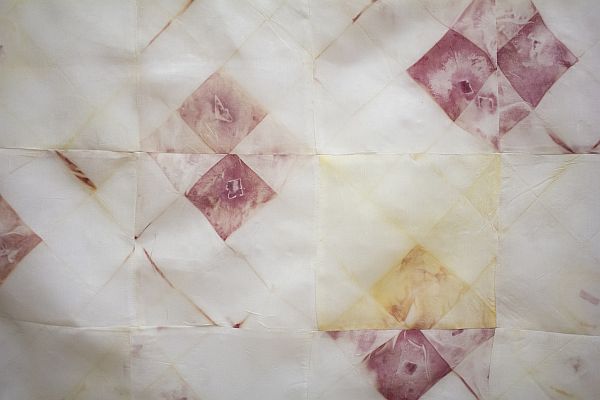During the summer and autumn of 2021, a temporary art installation will be in place near Blåsenhus. Akademiska Hus, the Public Art Agency Sweden and Uppsala University invited artist Amanda Selinder to create this unique art project “Biological pigments - fungal mycelium, algae, plants and bacteria” in the Lugnet park near Campus1477 (Blåsenhus).
Amanda Selinder is up to her eyeballs investigating the fungi, algae, bacteria and plants she has found in the park and pond, and exploring how she can use them to dye textiles. To assist her in this endeavour, she is using traditional vegetable dyeing methods such as boiling and solar dyeing. But she is also extracting pigment from bacteria and fungi in the laboratory in the adjacent Evolutionary Biology Centre along with researchers Anna Rosling and Gustaf Granath. The finished artwork will consist of six pieces of dyed silk fabric.
Goal to stimulate new perspectives
“Art plays an important role in the creation of attractive campuses and with the artworks on campus we want to stimulate new perspectives and ideas in everyone who spends time there. This installation is being created with the aid of nature and is particularly well-suited to an area where we have invested heavily in protecting green areas and promoting biodiversity,” says Peter Bohman, Market Area Director at Akademiska Hus.
The art project “Biological pigments” is an extension of the many ecological sustainability projects carried out in the campus area. The development of the project can be followed via a website from mid-July. Anyone who wants to can pass by the Lugnet park next to Blåsenhus and see how the work is progressing. During the summer and autumn there will also be workshops with the public and students on site. The finished work “Biological pigments” will be ready for viewing from the end of August.
